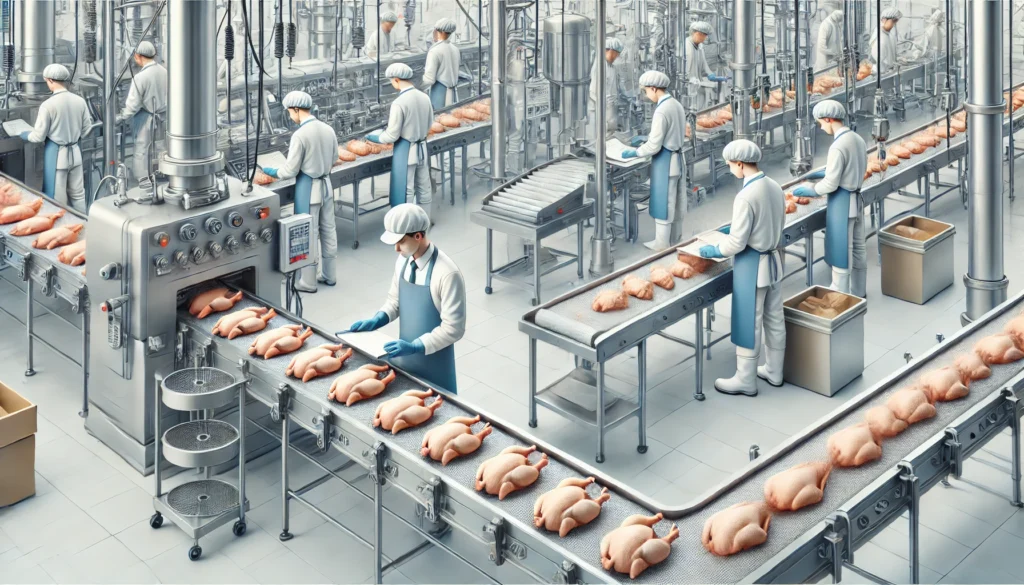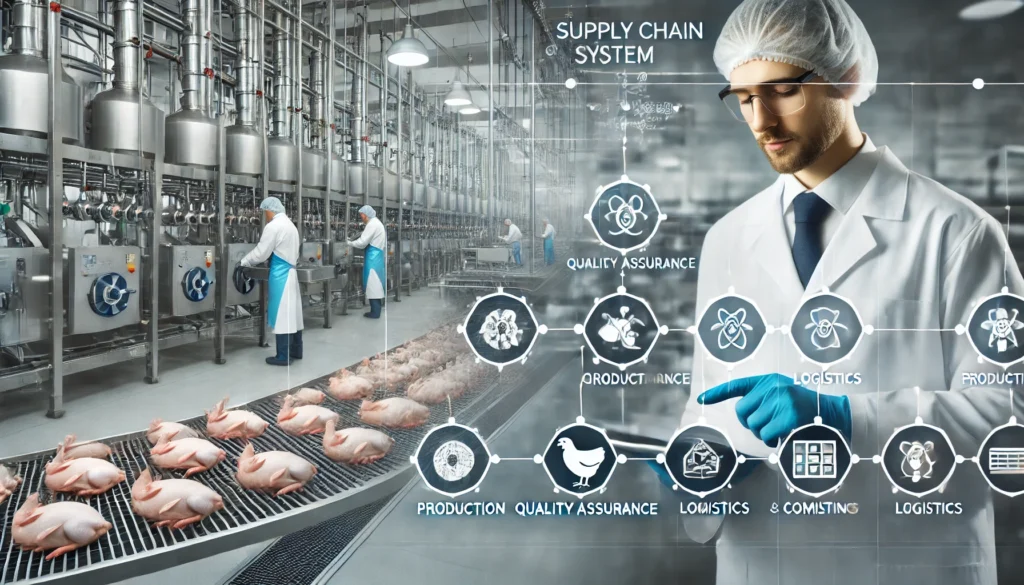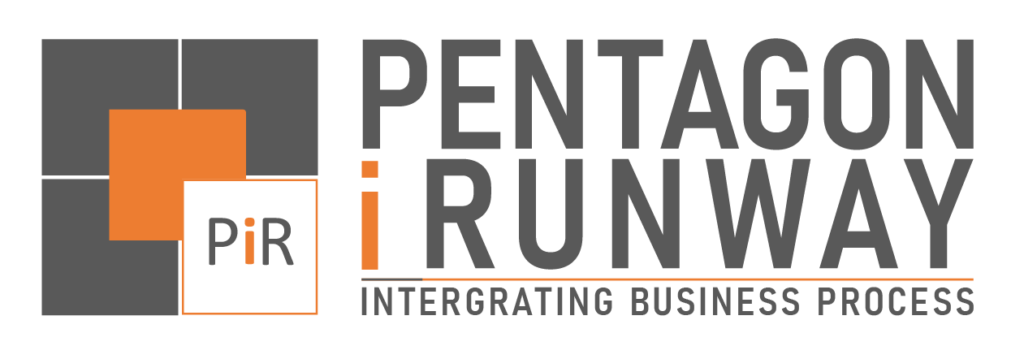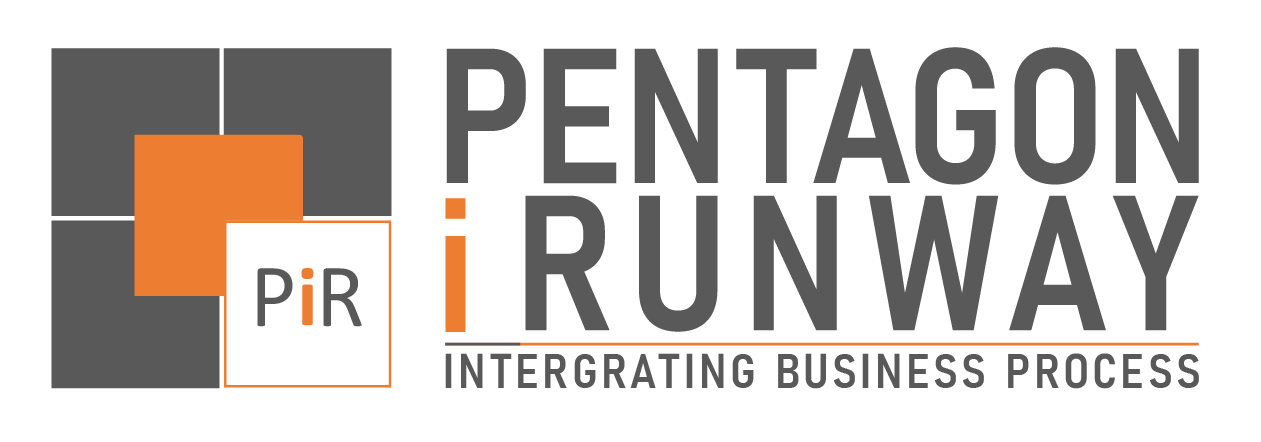The poultry industry is a vital component of the global food supply chain, contributing significantly to the protein needs of millions worldwide. However, the intricate processes involved in poultry meat production demand high levels of efficiency, quality assurance, and regulatory compliance. With evolving consumer expectations and stringent industry standards, modern technology, particularly Enterprise Resource Planning (ERP) systems, is transforming how poultry meat processing operates.
The Complexities of Poultry Meat Processing
Poultry meat processing is a multifaceted operation involving several stages, from farm to fork. Each step—including slaughtering, deboning, packaging, and distribution—must meet strict hygiene standards and efficiency requirements.
Key Challenges in Poultry Meat Processing
Maintaining Hygiene and Safety: Ensuring cleanliness to prevent contamination is paramount. Poultry is highly susceptible to bacteria like Salmonella, necessitating rigorous monitoring and control.
Regulatory Compliance: Food safety regulations vary by region but are universally stringent. Meeting these requirements demands meticulous record-keeping and adherence to best practices.
Operational Efficiency: Balancing cost efficiency with quality assurance is a continual challenge, especially for large-scale operations.
Supply Chain Traceability: Consumers and regulators increasingly demand transparency regarding the origin and handling of poultry products. This requires robust tracking systems.
The Role of Technology
Traditional methods often fall short in addressing these challenges effectively. This is where modern technology, including ERP systems, steps in to streamline operations and ensure compliance.

What is ERP, and How Does it Apply to Poultry Meat Processing?
ERP is a software solution that integrates various business processes into a unified system. In the context of poultry meat processing, ERP systems enable:
Centralized Data Management: All data, from production to distribution, is stored in a single system, improving accessibility and accuracy.
Automation of Processes: Tasks like inventory management, quality checks, and reporting can be automated, reducing errors and saving time.
Real-Time Monitoring: ERP systems provide real-time data on operations, helping identify and resolve issues promptly.
Benefits of ERP in Poultry Meat Processing
1. Enhanced Quality Control
Quality control is a cornerstone of meat processing. ERP systems facilitate:
Automated Quality Checks: Sensors and software monitor parameters such as temperature and humidity to ensure optimal conditions.
Standardized Processes: Ensuring uniformity in processing methods reduces variability and maintains consistent product quality.
2. Improved Compliance Management
Meeting regulatory requirements is easier with ERP systems that offer:
Comprehensive Record-Keeping: Automated logs of production details make audits seamless.
Labeling and Traceability: Accurate labeling ensures compliance with local and international standards.
3. Streamlined Supply Chain Operations
ERP systems enhance supply chain efficiency by:
Inventory Optimization: Real-time tracking of stock levels helps prevent overproduction or shortages.
Logistics Coordination: Improved scheduling and route optimization reduce delivery times and costs.
4. Cost Reduction
While implementing ERP systems requires an initial investment, they offer long-term savings through:
Reduced Waste: Better inventory and production management minimize losses.
Efficient Resource Use: Automation cuts down on labor and utility costs.

Implementation Challenges
Despite its benefits, adopting ERP in poultry meat processing comes with challenges:
High Initial Costs: The upfront investment can be significant, particularly for small to medium-sized enterprises.
Complex Integration: Merging ERP with existing systems and processes requires careful planning and expertise.
Training Requirements: Employees need to adapt to new technologies, which can involve a learning curve.
Overcoming the Barriers
1. Choosing the Right ERP System
Selecting an ERP solution tailored to the poultry industry ensures better alignment with operational needs.
2. Phased Implementation
Rolling out ERP in stages minimizes disruption and allows for adjustments based on feedback.
3. Training and Support
Investing in comprehensive training programs ensures employees are equipped to utilize ERP systems effectively.
Innovations on the Horizon
Emerging technologies like IoT (Internet of Things) and AI (Artificial Intelligence) are further enhancing ERP systems. IoT sensors provide granular data on equipment performance, while AI algorithms analyze patterns to predict maintenance needs or optimize production schedules.
Conclusion
The poultry industry’s dynamic landscape requires businesses to adopt innovative solutions to stay competitive. ERP systems offer a transformative approach to addressing the challenges of meat processing, from ensuring quality and compliance to streamlining operations and reducing costs. While the transition to ERP may involve hurdles, the long-term benefits make it a worthwhile investment for forward-thinking poultry processors.
By integrating ERP with advanced technologies and best practices, the poultry industry can not only meet current demands but also prepare for future challenges, delivering safe, high-quality products to consumers worldwide.

